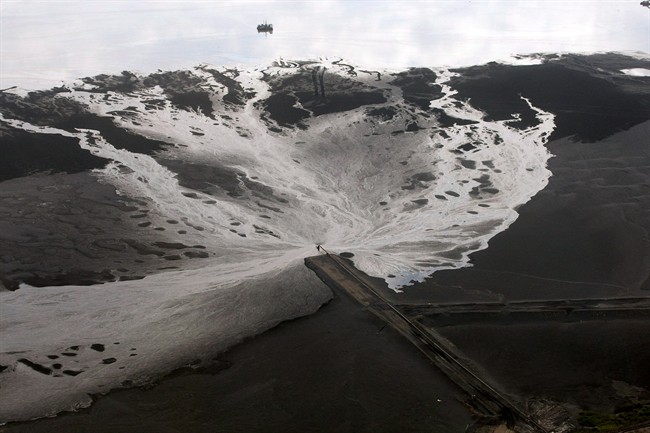EDMONTON – Building the Energy East pipeline to bring oilsands bitumen to eastern Canadian refineries would increase the industry’s greenhouse gas emissions enough to wipe out all the gains caused by Ontario’s elimination of coal-fired power plants, says an environmental think-tank.

Report author Clare Demerse of the Pembina Institute said that conclusion demonstrates that regulators should consider the proposed pipeline’s climate impacts in hearings on the project.
READ MORE: Application for Energy East Pipeline delayed until 2014: TransCanada
“We think that we need to think about the implications of pipelines, not just in terms of the implications along the route, but there’s also a climate conversation to be had,” Demerse said.
The report uses industry and government figures to argue that expansion of the industry is linked to expansion of the pipeline network that would bring its product to new markets.
Both the Canadian Association of Petroleum Producers and the National Energy Board have said that an anticipated tripling of oilsands output over the next 16 years depends heavily on new pipelines.
Some, such as the U.S. State Department in its assessment of the Keystone XL pipleine to the Gulf coast, have concluded that oilsands oil will reach markets whether or not individual projects proceed. Expansion will happen whether or not the lines are built.
READ MORE: Energy East pipeline would support 11,000 jobs: study
But Demerse’s report suggests that to fulfill those growth forecasts, the industry will need all current pipeline proposals in addition to rail transport. As well, pipelines would bring oilsands bitumen to tidewater, allowing the oil it produces to sell at international prices.
“They actually need all of (the projects) in order to achieve their production goals,” Demerse said.
“What that means is that there is a link between any given proposal not going ahead and a potential slowdown in oilsands production. Also, if any one were to be rejected or not proceed, that also creates uncertainty that would be reflected in a way that companies think about future expansion.”
Focussing on emissions created from mining the bitumen to delivering it to the refinery gate, Pembina said Energy East would lead to the creation of 30 million to 32 million tonnes of greenhouse gas emissions a year.
That’s about the equivalent of the carbon dioxide created by seven million cars and roughly equal to the eventual reductions achieved by the phasing out the use of coal power in Ontario.
But Greg Stringham of the Canadian Association of Petroleum Producers said it’s a mistake to assume the industry’s options for getting its product to market are limited to the pipeline projects already on the books. Bitumen will find buyers one way or another, he said.
“The amount of greenhouse gas emissions coming from the oilsands is not dependant on any single pipeline. There are a number of alternatives being put forward to get it to market.
“We will need that amount of total capacity, but it will come in a variety of forms.”
Stringham said the industry opposes including climate change issues in a regulatory review of any pipeline project.
“The discussions for the greenhouse gas issues really happens at the time the projects themselves are approved,” Stringham said. “To have it again, when you’ve already had it at the time of production, seems duplicative.”
Still, Demerse said it’s a mistake to ignore links between climate change and oilsands pipelines, as was done in recent hearings on the Northern Gateway proposal.
“A lot of people want to have a conversation about the link between climate and pipelines. We want to see any regulatory consideration of this pipeline include not just the pipeline route, but also the impacts of what would flow in the pipeline.”



Comments